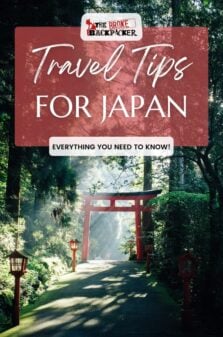Japan! With over 14,000 islands, the Land of the Rising Sun is truly a place of mystery. This is where the traditions of the past gone ages graciously dance with the bustling craziness of the present.
Here you’ll find ancient villages living in harmony with skyscrapers and futuristic tech. This is the birthplace of anime, home to sushi perfection, and a land of mystical mountains and tropical island dreams.
What truly makes Japan special is its culture – it stands strong and is utterly unique, drawing travelers from far and wide. But, for first-time travelers, Japan can be a tad perplexing, occasionally intimidating, and even rather overwhelming.
In October 2023, I spent over a month backpacking and hitchhiking across this wonderful country, so fear not, friends… I’ve compiled the ULTIMATE list of 27 Japan travel tips that I wish I’d known before setting foot in this enchanting world.
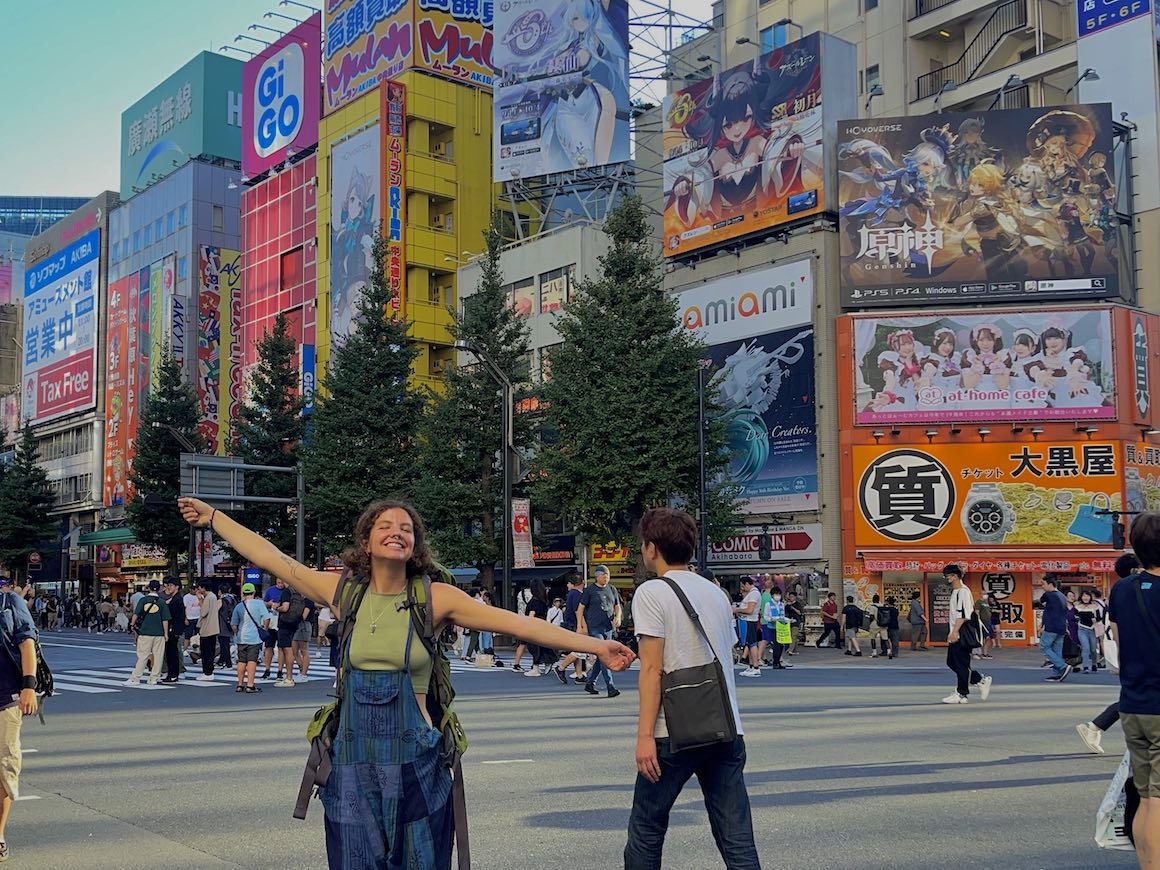
Photo: @audyscala

Do You Want to Travel FOREVER??
Pop your email in below to get a FREE copy of ‘How to Travel the World on $10 a Day!’.
- 1. Think About Hitchhiking
- 2. Get an IC Card – Godsend!
- 3. Try Staying at K’s House Hostels
- 4. Your ULTIMATE Japan Travel Tip: Don’t Tip
- 5. Trash Disposal
- 6. Carry Cash
- 7. Be Prepared to Walk…. a Lot
- 8. Invest in a Cultural Experience
- 9. Before You Go, Get Familiar With The language
- 10. Shhh-inkansen
- 11. Travel During Off-Season
- 12. Chopstick etiquette: Pro Japan Travel Tip
- 13. Don’t Order Too Much Food
- 14. Eat Your Breakfast at The Convenience Stores
- 15. Japan Is Not All Sushi and Ramen
- 16. Being Vegan Is Difficult in Japan
- 17. Try To Make It to One of Japan’s festivals
- 18. Get a Japan Rail Pass
- 19. Understand Japanese Religions
- 20. ALWAYS Travel With Insurance
- 21. Head to The OCEAN!
- 22. And Don’t Forget About The Mountains
- 23. You Can Drink The Tap Water
- 24. Amazingggg Public Bathrooms
- 25. Onsen Etiquette
- 26. Get Pocket Wi-Fi or a SIM Card
- 27. Smile!
1. Think About Hitchhiking
We all know something that holds people back from traveling to Japan is the cost. But the main cost of backpacking in Japan is actually the transportation. So why not make it free, stick it to your thumb, and see how it goes?
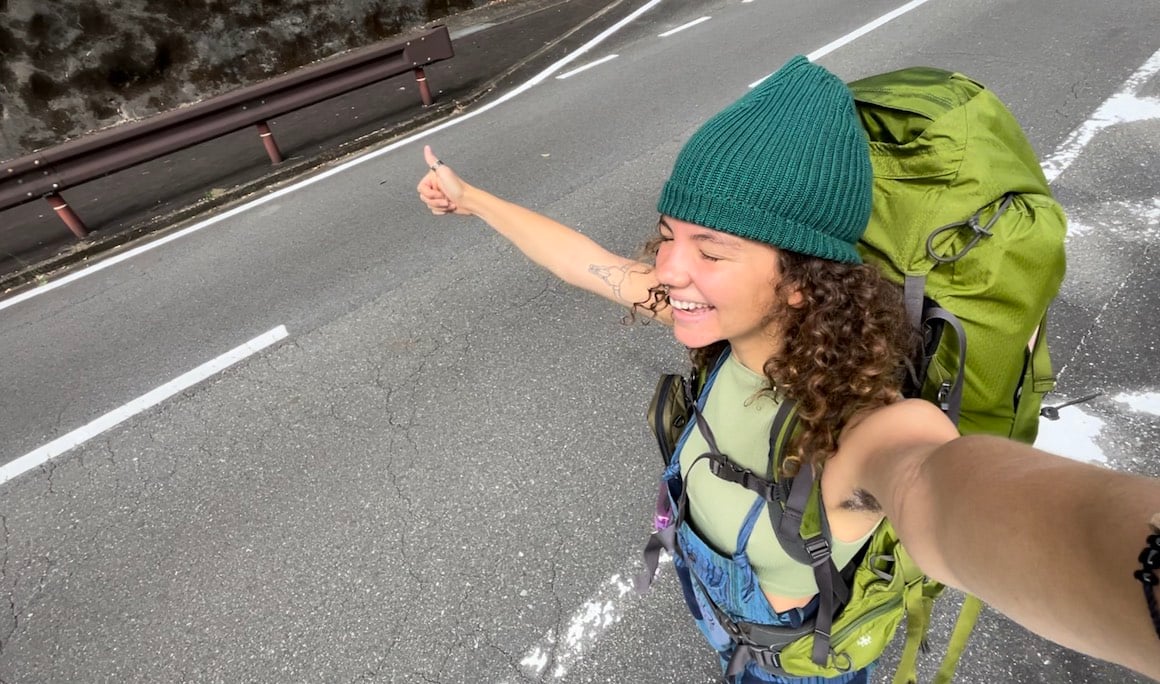
Photo: @audyscala
I was pleasantly surprised by how smooth it was to hitchhike as a woman here. I made new friends, learned more of the language, and saw places public transport never could have taken me. Even more remarkable is how my perspective on the Japanese people has deepened.
Japan is a very safe place to travel, which makes it a wonderful place to begin your hitchhiking journey.
2. Get an IC Card – Godsend!
This Japan travel tip is a GAME-CHANGER. I can’t believe I spent a week backpacking in Japan without one, grappling with the confusing ticket machines EVERY TIME I tried to take the subway.
Trust me, grab an IC card like Suica, Pasmo, or Icoca.
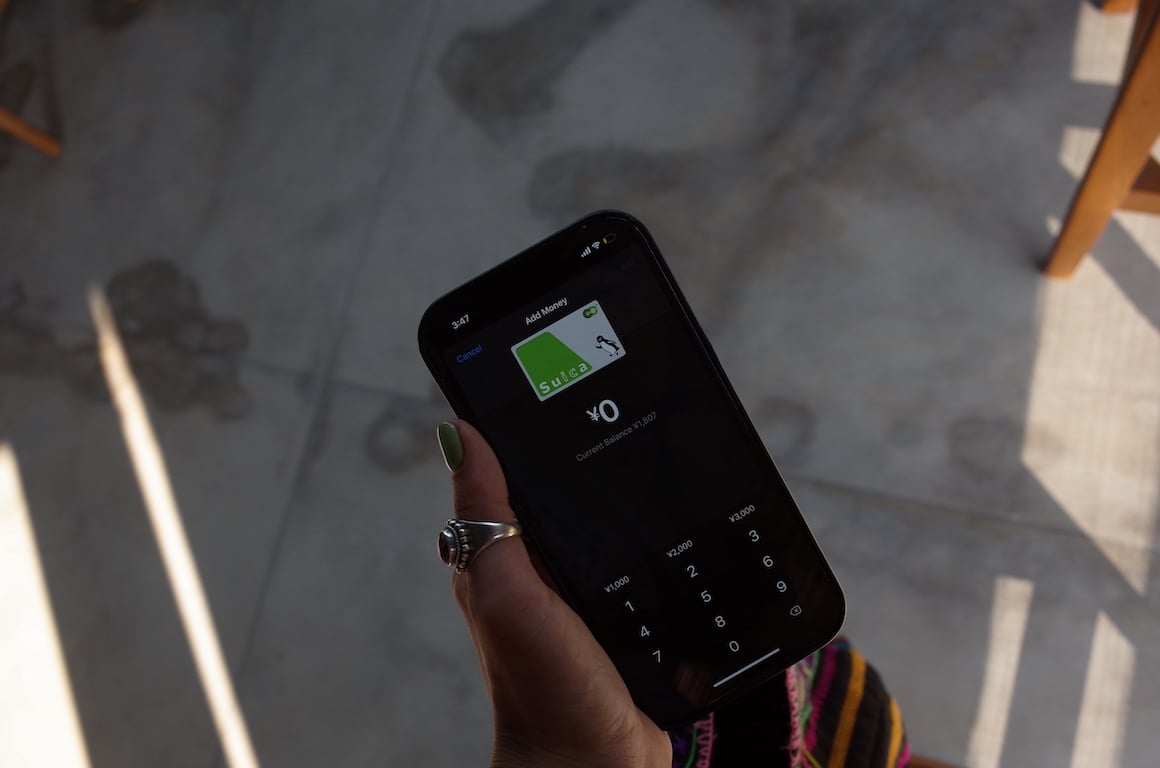
You can add them to your Apple Wallet in a matter of seconds. Just tap when you enter and tap again when you exit, and your fare is automatically deducted.
You can use them at convenience stores and some grocery stores too which is great if your debit card has foreign transaction fees.
3. Try Staying at K’s House Hostels
K’s House Hostel is a hostel chain in Japan. Unlike other hostel chains, where they’re exact replicas of each other just in different locations, this hostel chain caters to each hostel’s surroundings and local culture.
Some are renovated 150-year-old Japanese buildings, while others are normal homes in lakeside neighborhoods.
But one thing they all have in common is a very friendly atmosphere, freshly brewed coffee in the mornings, and clean shared kitchens.
If you stay at K’s house repetitively, you get a 10% discount, which really adds up for budget travelers looking for where to stay in Japan!
4. Your ULTIMATE Japan Travel Tip: Don’t Tip
Tipping is generally not practiced or expected in Japan, it can actually be seen as unusual, awkward, or even rude.
The reason behind this is deeply rooted in Japanese culture, where service is considered an integral part of the job and employees take pride in providing excellent service as part of their duty.
Tipping could imply that the staff isn’t paid well enough. Instead, expressing gratitude with a simple “arigatou gozaimasu” (thank you) is appreciated.
5. Trash Disposal
Japan’s limited public trash disposal system can be a bit puzzling for newcomers, especially for me when I started my journey backpacking in Tokyo and couldn’t find a bin for the life of me…
The reason for this? Well, it’s largely due to the Japanese culture of personal responsibility.
People are expected to take their trash home with them and sort it meticulously into categories like burnable, non-burnable, and recyclables.
Then wash it before putting it in the relevant trashcan. It’s all about minimizing waste and maintaining clean public spaces.
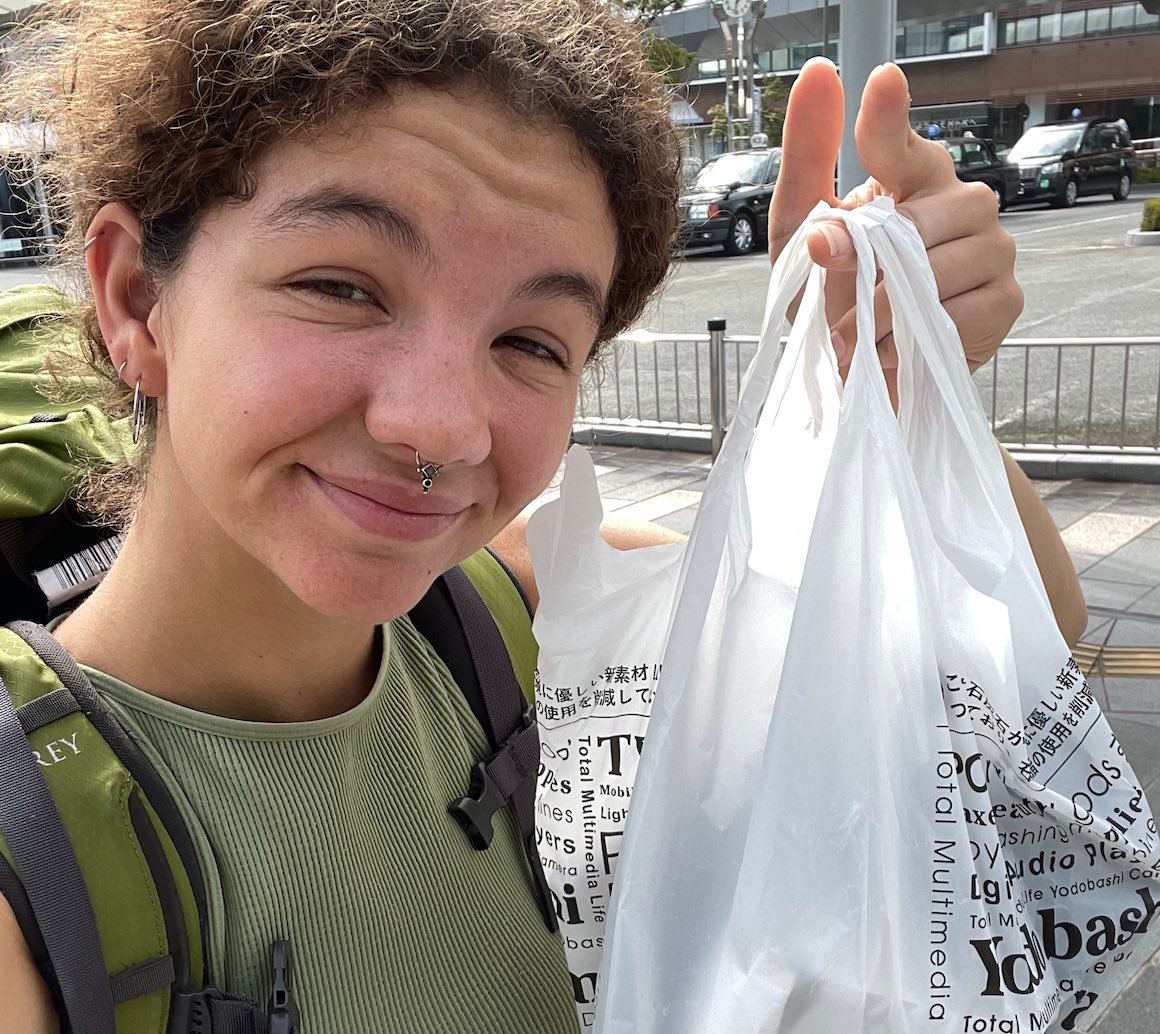
Photo: @audyscala
So, while you might struggle to find public trash bins, remember that it’s a shared commitment to environmental cleanliness, and it’s a small price to pay for Japan’s pristine streets and parks.
My perspective on this changed from annoyance and frustration to respect and gratitude when I learned about the reason behind having no trash cans on the streets.
If you really need to throw away the trash, there are normally bins in 7/11 or Lawson’s. Keep this Japan travel tip for future reference. 🙂
6. Carry Cash
Japan is a very cash-centric place. Always carry some cash with you, as some restaurants and shops don’t accept cards. While in bigger cities like Tokyo, this is changing quickly, rural areas seldom accept cards.
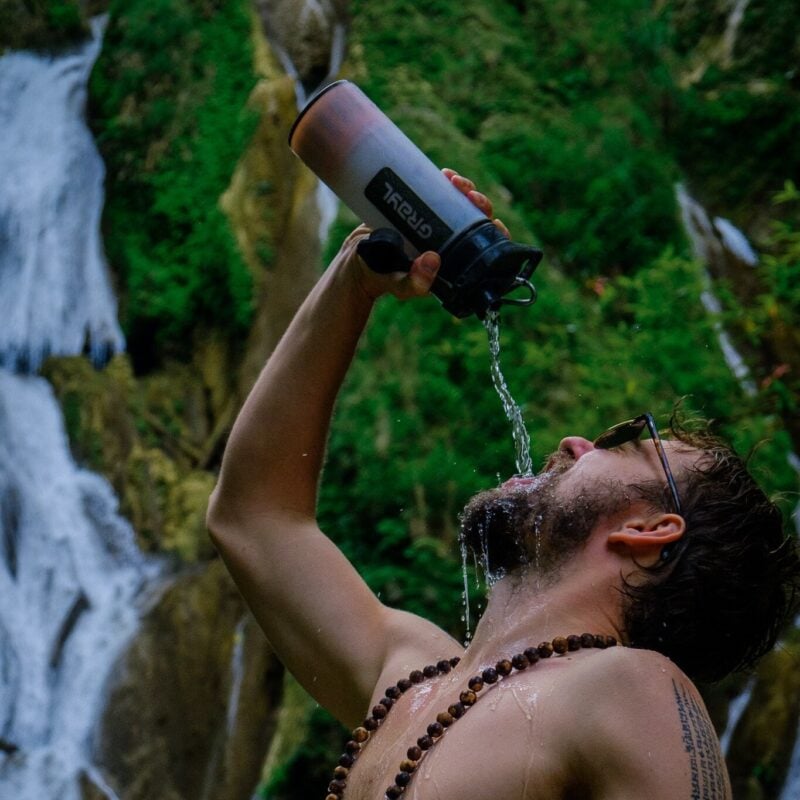
Drink water from ANYWHERE. The Grayl Geopress is the worlds leading filtered water bottle protecting you from all manner of waterborne nasties.
Single-use plastic bottles are a MASSIVE threat to marine life. Be a part of the solution and travel with a filter water bottle. Save money and the environment!
We’ve tested the Geopress rigorously from the icy heights of Pakistan to the tropical jungles of Bali, and can confirm: it’s the best water bottle you’ll ever buy!
View on REI Read the Review7. Be Prepared to Walk…. a Lot
Whilst there is public transport in Japan, bring a good pair of walking shoes because you’ll be walking everywhere. I walked AT LEAST 5-10 km a day. Even walking to and from subway stations or bus stops can add an extra 1-2 km.
I also HIGHLY recommend bringing a foldable day pack. I traveled with the Nomatic packable daypack #1, and it was perfect for wandering around with.
This is good, though, as you’ll work up an appetite and have room for more sushi. Japan travel hack, guys!
8. Invest in a Cultural Experience
An absolute HIGHLIGHT of my time in Japan was spending a couple of hours learning all about Samurai culture!
MANY dojos offer touristic samurai experiences, however, only a handful are the real deal, and I strongly recommend doing your research. The school we went to was amazing, I trained with a Samurai master with over 20 years of experience.
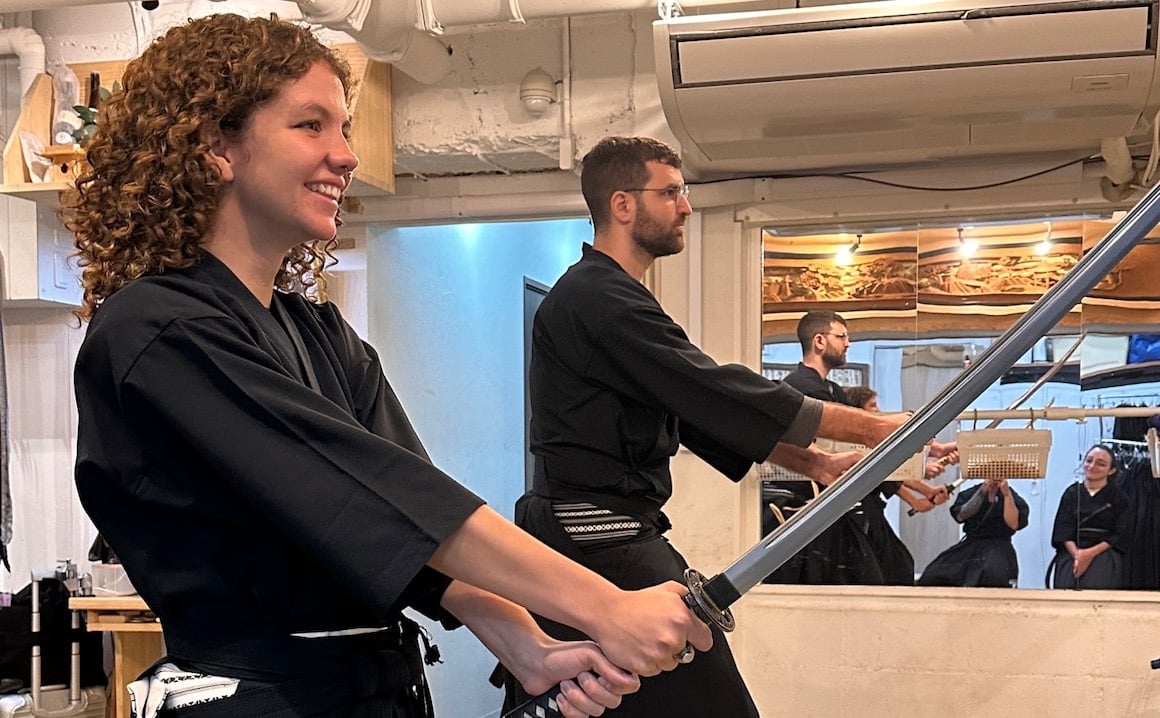
You’ll learn the fascinating history of the samurai as well as the proper techniques to hold the sword, attack your foes, and defend yourself.
At the end of the class, you’ll have the chance to slash and decapitate some rolled-up reed mats; a really thrilling ending. As a girl who isn’t always as stoked on swords as my guy friends, I wasn’t sure if I would particularly enjoy this, but it was a really powerful experience, and I highly recommend it.
9. Before You Go, Get Familiar With The language
Japan can be one of the trickiest places to travel in terms of the language barrier. Japanese people generally don’t speak much English and also tend to speak Japanese pretty quickly!
Learning some of the language before you arrive in Japan is a good idea. Not only will this lessen the number of awkward Google translate exchanges, but it will also allow you to experience the country much more INTIMATELY.
Here are some of my favorite/most useful words I picked up while in Japan:
- Gochisousama deshita (Goh-chee-soh-sah-mah deh-shee-tah) is a Japanese phrase used after finishing a meal to express gratitude. It’s a way to say, “Thank you for the meal” or “It was a feast.” It’s a polite way to acknowledge the person who prepared the food and the restaurant staff.
- Itadakimasu (Ee-tah-dah-kee-mahs) is said before beginning a meal in Japan to express gratitude for the food, the animals who were sacrificed to make the food, and the people who prepared it.
- Arigatou gozaimasu (Ah-ree-gah-toh goh-zai-mahs) = Thank you
- Onegaishimasu (Oh-neh-gah-ee-shee-mahs) = Please
- Sumimasen (Soo-mee-mah-sen) = Excuse me/Sorry
- Osusume? (Oh-soo-sue-meh) = What’s your recommended dish? (Perfect for when you can’t read the menu and have no idea what order to place)
10. Shhh-inkansen
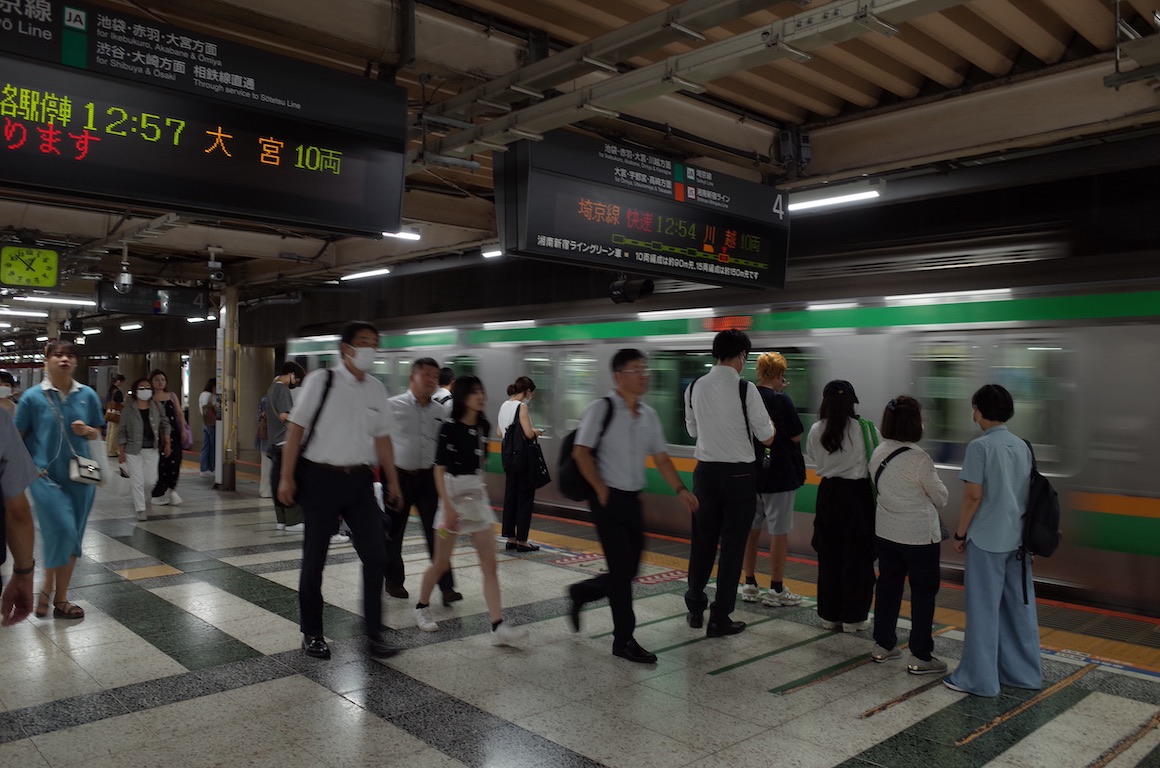
Japanese public transport is insanely quiet, especially the Shinkansen bullet trains. Even when the trains are packed shoulder-to-shoulder full of people, it’s still dead silent.
Guys, take note of this Japan travel tip: DO NOT answer phone calls on a bus or train, and do not speak and laugh super loudly with your friends. There is signage in most stations and inside trains to remind passengers of this.
11. Travel During Off-Season
Japan is well known for its cherry blossoms and fall foliage. It’s beautiful! But if you want a more budget adventure, try traveling during the summer or winter, as there are far fewer crowds and prices decrease significantly.
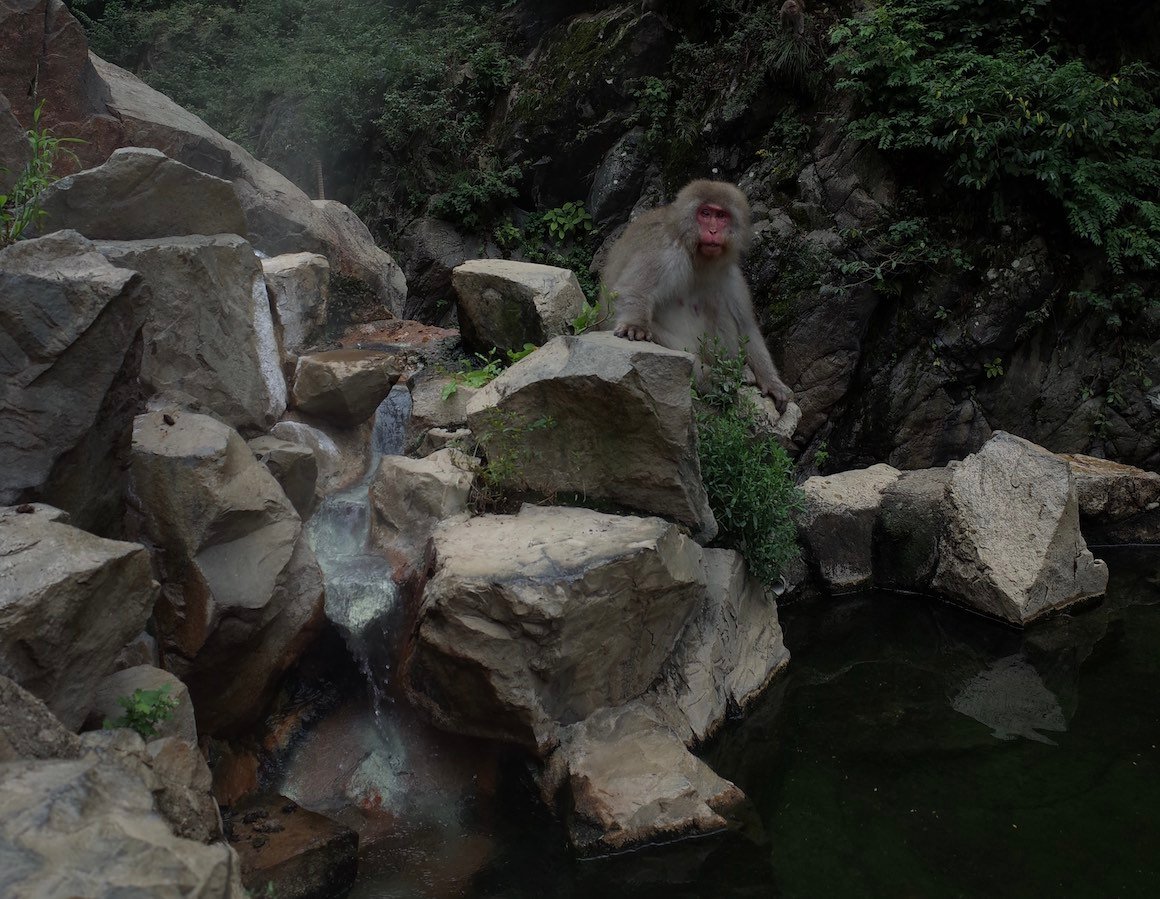
Photo: @audyscala
In the summer, there are vibrant festivals throughout the country, such as Gion Matsuri in Kyoto and Tanabata festivals.
December, January, and February are the absolute best times to explore Japan. In winter, you can check out skiing and snowboarding in regions like Hokkaido and Nagano. Warm up in traditional hot spring baths (onsens) while surrounded by snow.
12. Chopstick etiquette: Pro Japan Travel Tip
In Japan, it’s a good idea to avoid sticking your chopsticks upright in a bowl while chowin’ down. Now, that’s one chopstick etiquette I wish I knew before travelling to Japan.
This practice has some eerie ties to funeral rituals and can give off an uncomfortable vibe for those around you. It’s about more than just etiquette; it can also come across as a lack of respect for the chef who prepared your meal.

Photo: @audyscala
Even Shintoism, which has its say in these matters, frowns upon this practice. It can be seen as disrespecting the spirits who inhabit the rice.
To keep things cool and culturally sensitive, just pop your chopsticks flat on a rest or the edge of your plate when you’re not using them. It’s a simple Japan travel tip that goes a long way, and I wish I’d known sooner.
13. Don’t Order Too Much Food
Archive this Japan travel tip for later: Order with your stomach, not your eyes!
Not finishing your food is looked down upon in Japan. It implies wastefulness, a lack of appreciation for the chef’s efforts, and a disregard for portion sizes.
To show cultural sensitivity, it’s best to try to finish your food. Even if you can’t, make sure you still express gratitude for the meal’s deliciousness. Remember, you can always order more!
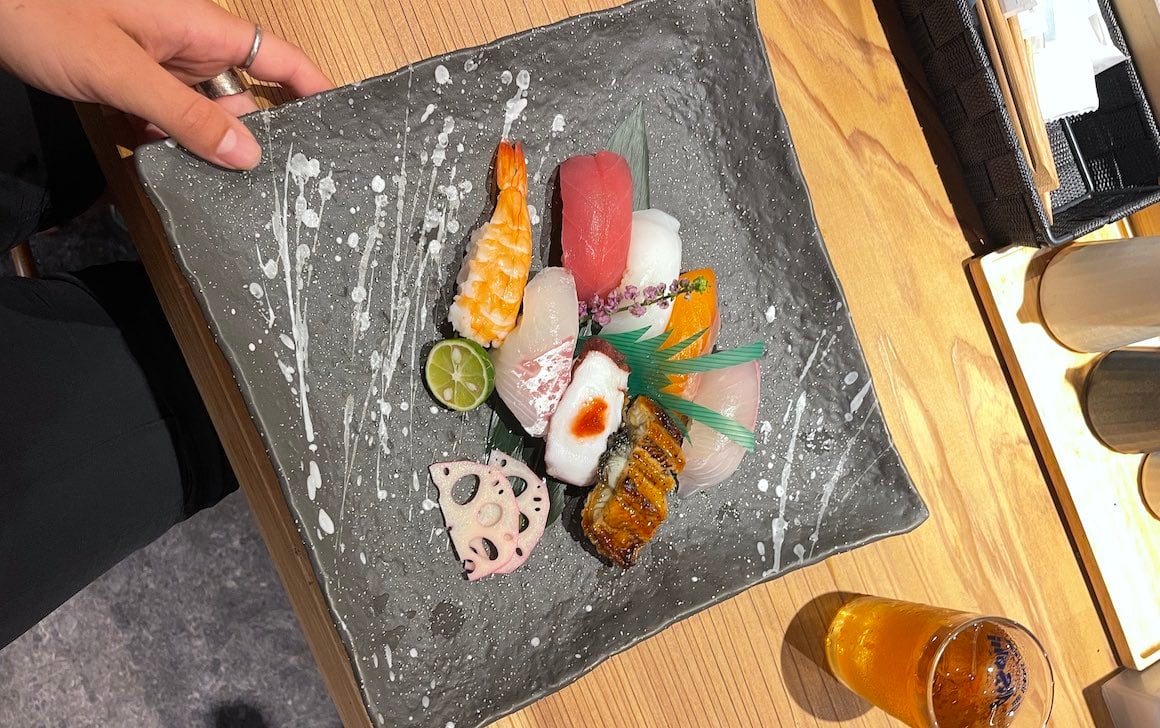
Photo: @audyscala
14. Eat Your Breakfast at The Convenience Stores
One of the things to know when traveling to Japan is that stores like 7/11 and Lawson have very yummy and budget-friendly options for breakfast.
You can have egg sandwiches and onigiri (Japanese rice balls). They also have coffee machines with lattes, which cost only $1.00.
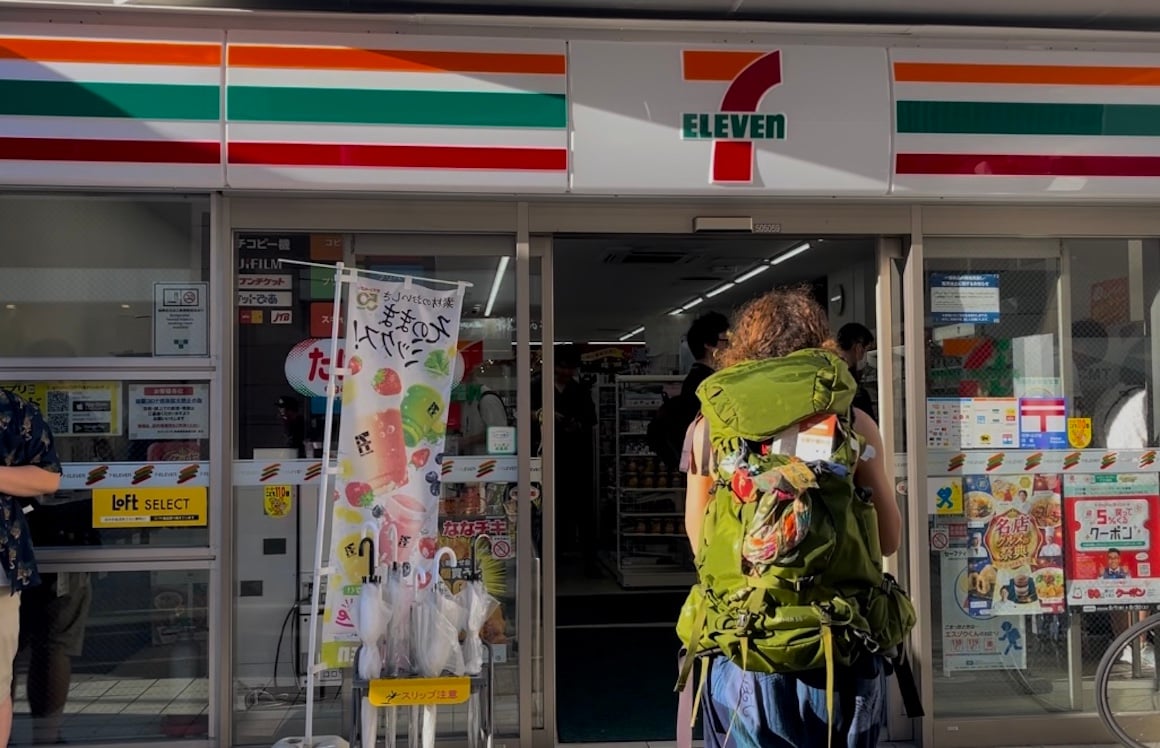
Photo: @audyscala
Many budget travelers choose this as an easy and convenient breakfast. I was so surprised at the delicious quality of the food at these stores compared to the ones in the US or Europe.
15. Japan Is Not All Sushi and Ramen
I thought I would be eating sushi and ramen every day in Japan, but I was pleasantly surprised by the variety of food Japan offers.
Make sure to eat other noodle dishes like Soba or Udon. Or try the yummy Yakitori, famous meat skewers in Tokyo, if you’re looking for something quick.
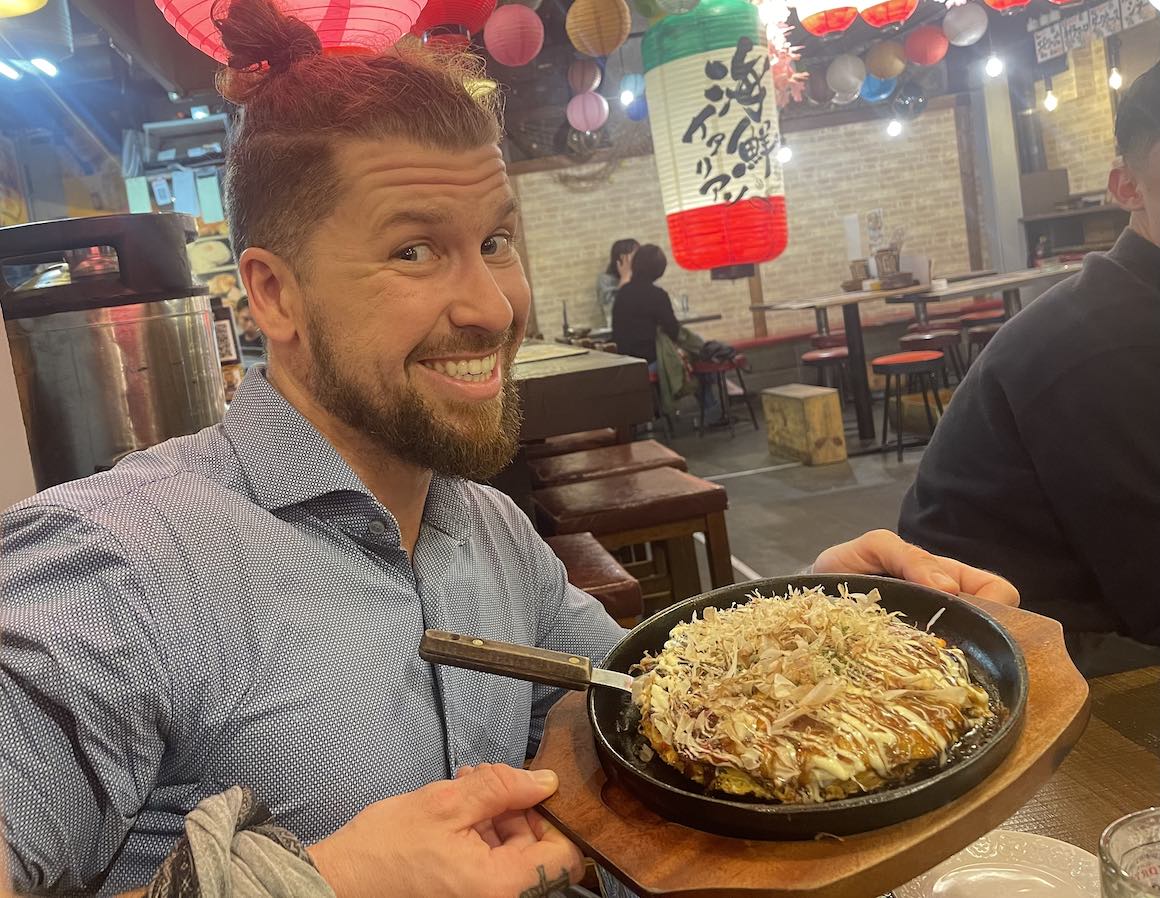
Photo: @audyscala
If you are looking for things to do in Osaka, try taking a street food tour and eating some Okonomiyaki and Takoyaki!
16. Being Vegan Is Difficult in Japan
For vegans, Japan can present some challenges, as the country’s traditional foods rely heavily on seafood and meat. Even seemingly plant-based dishes can often contain hidden animal ingredients, like fish stock or bonito flakes.
Ingrained in Japanese culture is a strong emphasis on hospitality and tradition, making it sometimes tricky to request special considerations.
While exploring places like Kyoto or Tokyo, they may have more vegan-friendly options. But they will still be more limited compared to Western countries, although this is improving as time goes on.
17. Try To Make It to One of Japan’s festivals
Attending a Japanese festival can be an amazing way to experience the culture more intimately, get a glimpse into the past, eat amazing food, and see parts of Japan you never normally would.
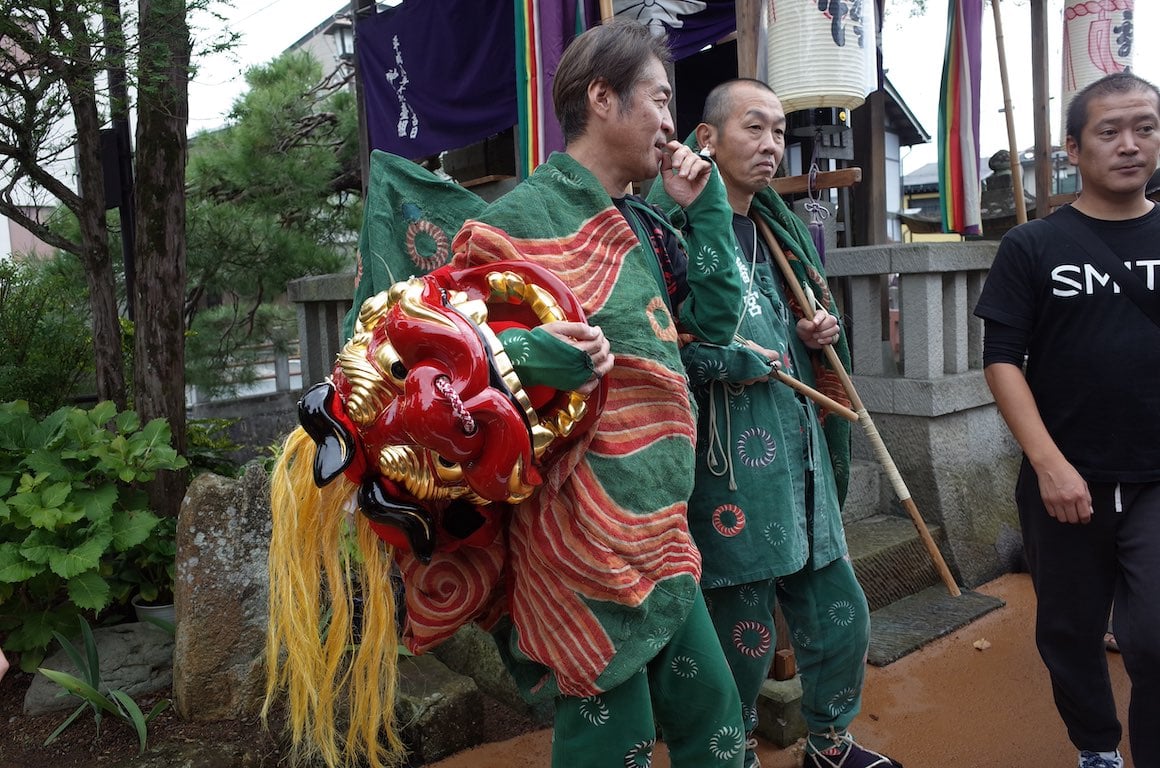
Photo: @audyscala
Try to see if you can incorporate any of these incredible festivals in Japan into your itinerary.
- Cherry Blossom Festivals: Celebrated in spring all over the country, these festivals honor the cherry blossoms with picnics and light-up events.
- Gion Matsuri: This is one of Japan’s most famous and grandest annual festivals. It is held in Kyoto in July and features a beautiful parade of traditional floats
- Tanabata (Star Festival): Celebrated on the 7th day of the 7th month every year, locals decorate bamboo trees with strips of paper, with wishes written on them.
- Gion Kobu Geiko and Maiko Dances: Here you can see Geishas perform beautiful dances all around Kyoto, a truly once-in-a-lifetime experience.
- Sapporo Snow Festival: For a whole week, Hokkaido becomes decorated with crazy, elaborate snow and ice sculptures
- Takayama Festival: This Japanese town in the mountains becomes full of floats, music, and food and celebrates the coming of spring and autumn.
18. Get a Japan Rail Pass
The Japan Rail Pass can be the ultimate budget hack for traveling around Japan. With this, you get unlimited access to all JR lines for 1, 2, or even 3 weeks, depending on what you choose.
Armed with your trusted JR Pass, you can crisscross the entire country and use it to navigate big cities like Tokyo as well.
However, be sure to crunch the numbers and see if it’s cost-effective for the journeys you have planned, especially with the recent price hike (up by 70%!) in October 2023.
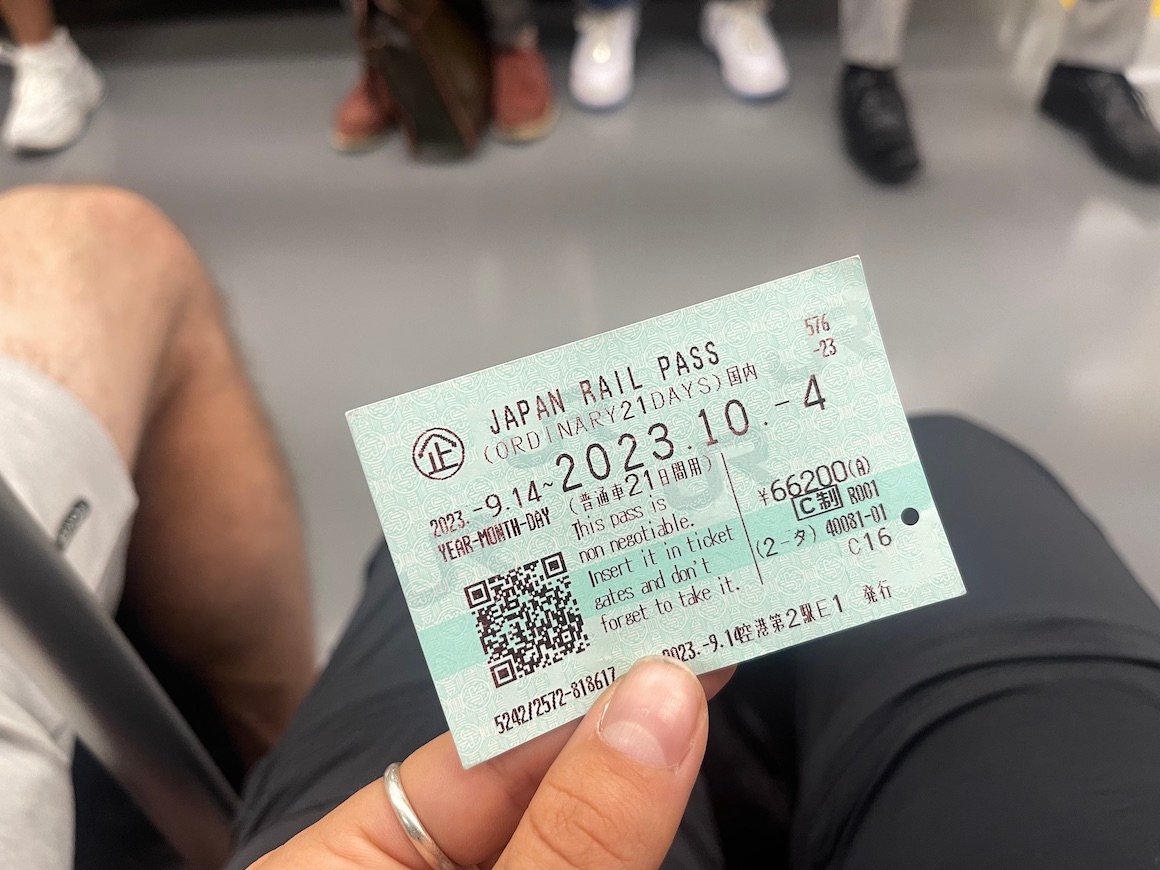
Photo: @audyscala
If you plan on making multiple longer journeys, it’s likely a money-saver. You should try to order one ahead of time, and it will get shipped to your house.
But if you’re like me and don’t really have an address to ship to, you can pick it up at a JR ticket office at bigger stations across the country.
19. Understand Japanese Religions
It’s important to educate yourself on the difference between shrines and temples, as it’s easy to group them together or assume they are the same.
Shrines, known as “jinja,” are places of Shinto worship and often have a Torii gate at their entrance. They are associated with Japan’s indigenous Shinto religion which focuses on kami (spirits).
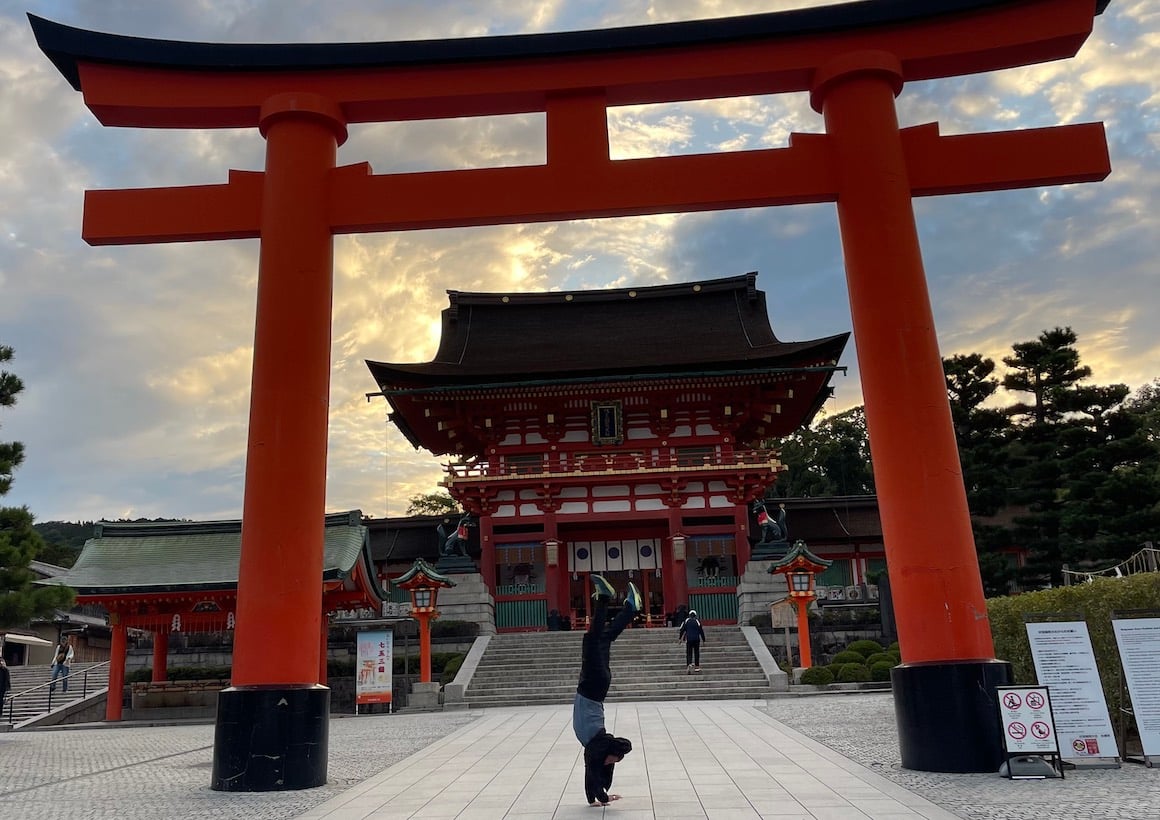
Photo: @audyscala
They normally have the word “shrine” at the end of the name, which is an easy way to identify them. Temples tend to utilize the suffixes “ji,” “in,” “tera” or “dera” at the end instead.
Some good examples of these are Asakusa’s Senso-ji, Kyoto’s Kiyomizu-dera, and Miyajima’s Daisho-in. Knowing this difference can help you appreciate the rituals and customs at each site, from clapping at shrines to bowing at temples.
20. ALWAYS Travel With Insurance
When backpacking, you never know what can happen. While travelling, I’ve had several unfortunate accidents where travel insurance would have saved me so much anxiety and trouble.
From motorbike crashes, food poisoning, ear infections, and broken bones. Take it from me, make your Japan trip anxiety-free and get solid travel insurance.
ALWAYS sort out your backpacker insurance before your trip. There’s plenty to choose from in that department, but a good place to start is Safety Wing.
They offer month-to-month payments, no lock-in contracts, and require absolutely no itineraries: that’s the exact kind of insurance long-term travellers and digital nomads need.
SafetyWing is cheap, easy, and admin-free: just sign up lickety-split so you can get back to it!
Click the button below to learn more about SafetyWing’s setup or read our insider review for the full tasty scoop.
21. Head to The OCEAN!
When people think of Japan, the first thing they think of is definitely not amazing waves or pristine beaches. But trust me, the ocean in Japan is MDMAmazing.
Head to the IZU peninsula just south of Tokyo for amazing waves, cute surf towns, some of the best beaches in Japan, or CRAZY scuba diving experiences with hammerhead sharks.

Of course, you can also head to Okinawa, a group of islands in the southern part of Japan known for its coral reefs, unique culture and food, and amazing people.
22. And Don’t Forget About The Mountains
A lot of people spend their Japanese travels in Tokyo, Kyoto, and Osaka and call it good. But oh boy, they are missing out.
The mountains in Japan attract people far and wide. Whether you’re looking for amazing skiing in the winter, trekking in the summer, amazing fall foliage, or adorable mountain towns, they’ve really got it all.
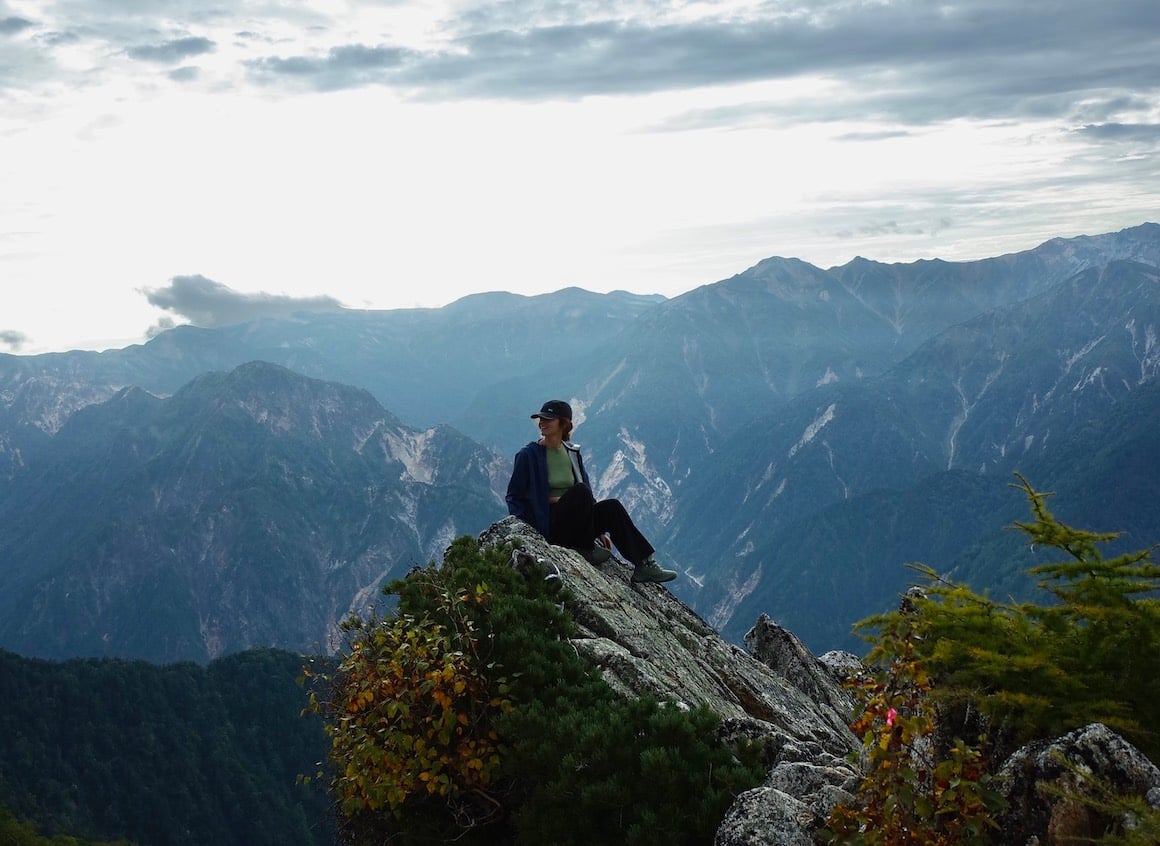
Photo: @audyscala
You can take day trips to the mountains easily from Tokyo to places like Hakone or Nikko, or if you’re feeling more adventurous, head to the Japanese Alps and explore.
You can also trek one of the top 10 pilgrimage routes in the world, the Kumano Kodo, located in the ancient forests of the Kansai regions. This is truly a spiritual experience.
23. You Can Drink The Tap Water
I’m sure everyone knows the dreadful feeling of having to purchase plastic water bottles in places like Southeast Asia, where you cannot drink tap water.
Japan is amazing for this reason, as you can bring your reusable water bottle with you everywhere and just refill it in bathrooms or your hotel room sink.
Environmentally friendly, convenient, and free! Can’t get much better than that.
Here at The Broke Backpacker, we are big fans of Grayl filtration water bottles. You can drink tap water from ANYWHERE when traveling; you can even drink water from puddles… The filter takes care of it.
24. Amazingggg Public Bathrooms
Speaking of convenience and free, EVERYWHERE you go in Japan, you’ll find clean and lavender-smelling public restrooms. They’re sometimes even adorned with fresh flowers or air fresheners.
It’s incredibly surprising to walk into a bathroom in the middle of the busiest areas of Tokyo, or the most remote areas of the countryside, and be met with a SPOTLESS restroom. One of the few places I’ve been in the world with this luxury, it certainly differs from backpacking in the USA!
25. Onsen Etiquette
Chances are, while you’re in Japan, you’ll at some point find yourself relaxing in an onsen, a traditional Japanese hotspring. But the first time can be a bit intimidating. So here are some pro Japan travel tips and etiquette, so you won’t be as lost as I was.
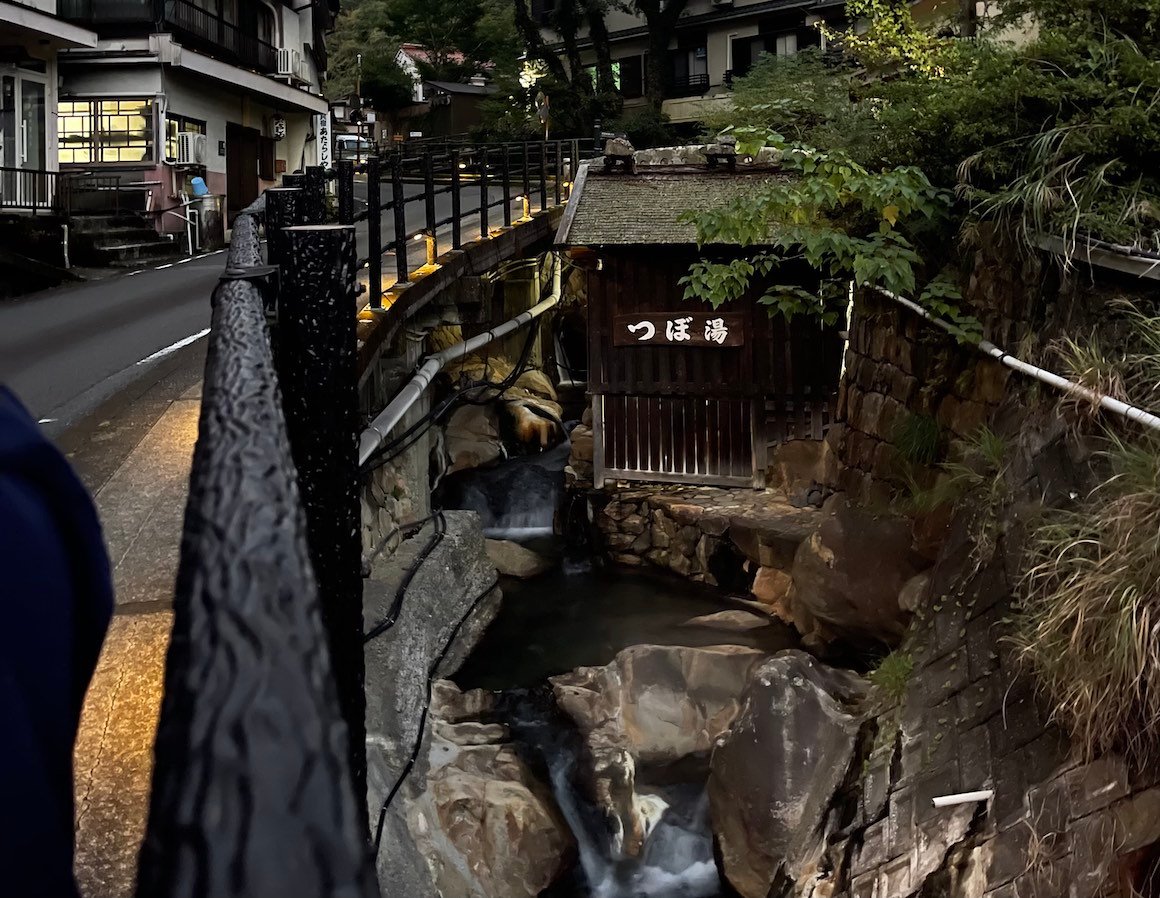
Photo: @audyscala
- Wash Up First: Before getting in the hot spring, make sure to thoroughly clean yourself in the washing area.
- No Swimsuits: Yep, you heard it right – no swimsuits allowed. Embrace your birthday suit.
- Respect Quiet: Keep it hushed. Onsen time is a peaceful time.
- Towels: The Onsen staff or your hostel will give you a small white hand towel. Don’t put it in the hot water; it’s for dabbing your face, not for dunking. You’ll see the locals balancing it on top of their heads as they soak.
- Tattoos: Some places might not allow tattoos. Check ahead if you’re inked up.
26. Get Pocket Wi-Fi or a SIM Card
While there are some countries you can skate by without the internet, Japan is NOT one of them.
You’ll be using Google Translate…a lot! You’ll also need Google Maps to navigate the extensive public transport systems.
Having a SIM card is literally a life-saving Japan travel tip! I recommend getting an international SIM ahead of time; there’s some good info on how to pick up a SIM card for Japan in this post.
27. Smile!
The people of Japan are a diverse and interesting bunch. And whilst the vibe is not the MOST friendly in the hectic urban metropolis, real rural Japan has truly lovely people.
I found that by smiling, being curious, and trying to speak a few words in Japanese, I had many really special experiences where it was just me and the locals…
I had great success hitchhiking in Japan and making friends on hikes. What’s more, I’ve learned a lot about Japanese culture from the people who picked me up or invited me to hang out with them.
So embrace these Japan travel tips, venture out with a smile, be curious, and you’ll find the best side of Japan waiting to embrace you.
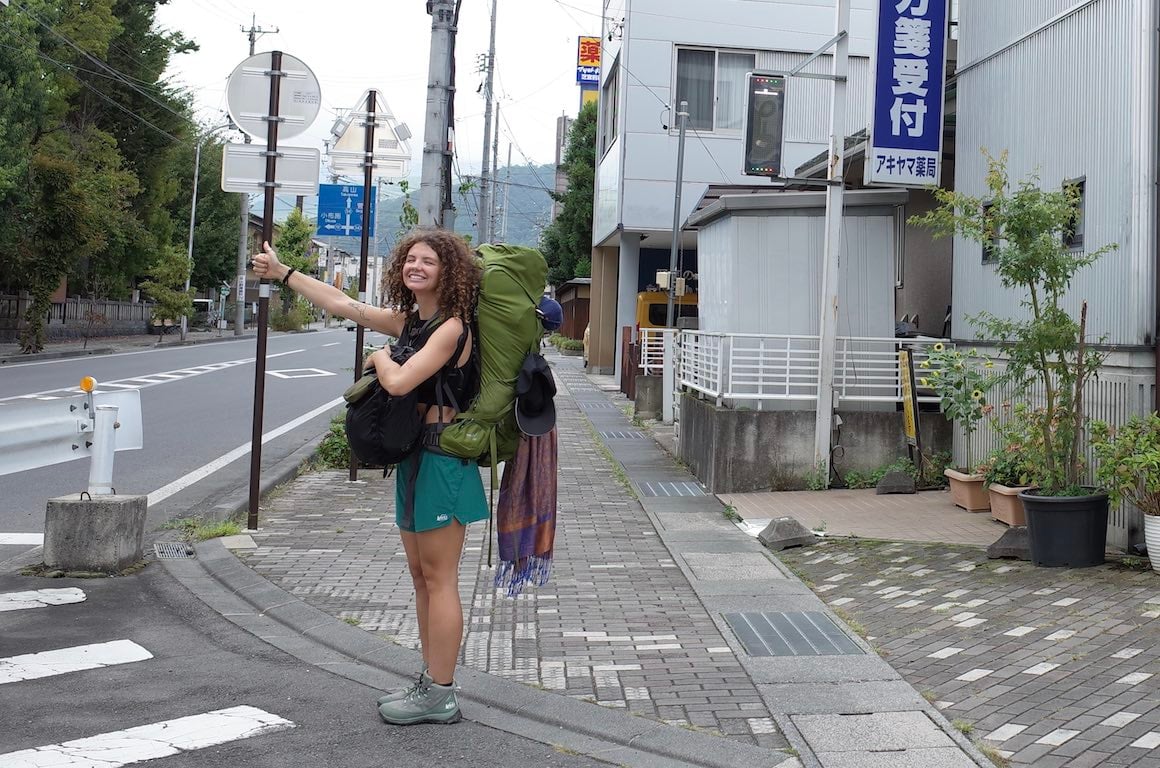

And for transparency’s sake, please know that some of the links in our content are affiliate links. That means that if you book your accommodation, buy your gear, or sort your insurance through our link, we earn a small commission (at no extra cost to you). That said, we only link to the gear we trust and never recommend services we don’t believe are up to scratch. Again, thank you!




